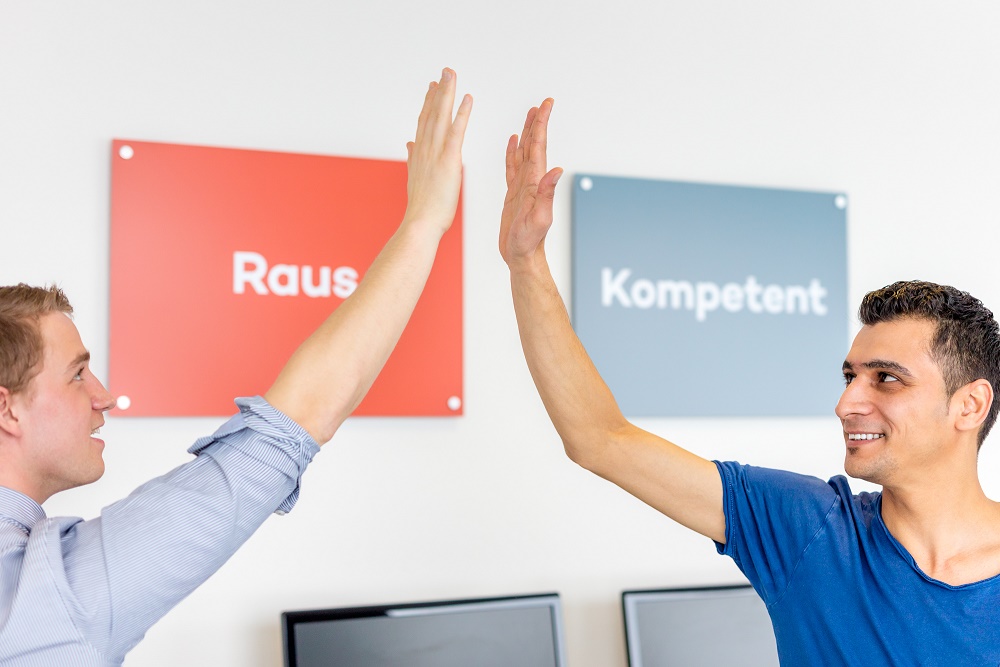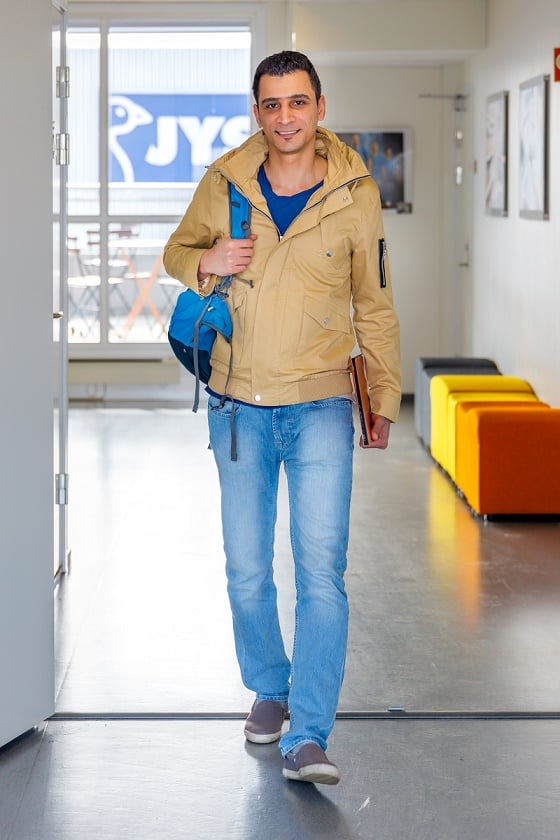Jobbmatch – use of tablets and career guidance
In Sandefjord, students in the introduction programme have been offered digital learning, career guidance and work experience. The objective is fast language learning progression and a quicker transition to work or education.
Challenge
Creating good combinations of qualification building when students are on work experience and away from the classroom has been a challenge.
Initiative
Jobbmatch is an educational programme that uses a tablet-based learning environment. This is combined with career guidance and Norwegian language training geared towards finding employment.
Result
Jobbmatch has produced good results for the participants. The students have either continued with higher education, found employment, or started an upper secondary school education combined with part-time employment.

Objective and target group
The aim is increased labour participation for immigrants who want a job where high formal competence is a requirement or for immigrants who want to follow an educational path that leads to a job that requires high formal competence.
After completing Jobbmatch, the participants must have a job establishment plan that contains milestones, the need for competence development and time data.
The target group is students who are on track 3 of the introduction programme. They must also have either passed B1 or have been assessed and considered able to manage level B1 before starting the course.
About the initiative
In Jobbmatch, digital learning tools are used in Norwegian language training to facilitate fast progression. The curriculum for track 3 B1 is followed.
The teacher uses digital tools and all the participants have their own tablets through which the training and follow-up take place. Among other things, the students have completed assignments using the “Book Creator” program, which allows written, oral and image-based presentations. Digital learning facilitates the follow-up of students who are on work experience and makes this easier with individually adapted education.
Through work-oriented Norwegian language training, the participants have been introduced to the rules of working life, HSE, as well as knowledge of colleges and universities in Norway. The participants are offered short work experience in a company – a “taste of work”. Being allowed to try out a relevant workplace gives the individual a better decision-making basis when choosing further education or a job.
Jobbmatch has produced good results for the participants. The students have also filled out an online career mapping tool - VIP 24. After completion, they received guidance from a career counsellor with certification in VIP 24. This type of guidance takes time – and usually extends over several days. A digital learning folder template has been developed that the students use when they are on work experience. The digital learning folder makes it easier for the students to receive individual follow-up and links the Norwegian language training to the work experience. Jobbmatch means that the participants receive a combination of individual career guidance and education in groups.
The group meets two days a week and follows ordinary classroom tuition or are on work experience the other three days. Municipalities wishing to try out the initiative should consider whether entire classes should participate. When selecting individual students, it can be challenging for these students to follow the class and the digital learning at the same time.

Organisation and economy
Sandefjord municipality acquires parts of the Introduction Programme from Fønix AS. Fønix AS is a rehabilitation company that provides a number of services to NAV and the corporate market. Fønix is responsible for the implementation of Jobbmatch but the project is well established in Sandefjord municipality and NAV Integration in Sandefjord.
Jobbmatch assumes that the municipality invests in tablets. Sandefjord municipality has used its own funds and received project funding from IMDi. The municipality has continued to use digital learning tools in its ordinary operations on all tracks and levels.
Result
Jobbmatch has produced good results for the participants. The students have either continued with higher education, found employment, or started an upper secondary school education combined with part-time employment.
By using digital learning tools, the students have a better opportunity to prepare at home. Prepared students gives increased motivation and faster progression.
It also provides better time for academic discussions in class, in addition to better follow-up of the student when he or she is out on work experience.
Through the digital learning programme, the students have become more independent and gained an increased sense of responsibility and commitment
IMDi’s assessment
- The use of digital tools provides good flexibility in teaching and the opportunity to follow the programme outside the classroom, e.g., when the student is out on work experience.
- It allows the students to work more independently, while at the same time receiving close follow-up from the teacher (via digital tools or in the classroom).
- The way Jobbmatch combines digital learning, work-oriented Norwegian language training and career guidance provides good opportunities for the participants to gain increased motivation and understanding of future opportunities for work or education.
- The experiences Sandefjord municipality has with Jobbmatch are well-documented. Among other things, a digital learning folder template has been developed that promotes the possibility of a good transfer to other municipalities.
About the assesment
IMDi’s quality assurance of best practice has been based on systematic assessments according to given criteria.
The criteria are:
- Result – what result does the practice produce?
- Descriptions – is the practice well described?
- Economy – what resources are required to implement the practice?
- Transferability – is it possible to implement the practice elsewhere?
The perspective on knowledge-based practice forms the basis for IMDI’s best practice work. It means that practices are assessed based on: Research-based knowledge, experience-based knowledge and user knowledge.
IMDi’s work on best practice is based on Rambøll’s report Model for identification and dissemination of best practice
Links
- Fønix: career and job guidance
- Contents of NorskPluss B1
- Jobb- og skolematch - metode for rask etablering i jobb og utdanning (Job and school match - a method for fast establishment in work and education) (presentation)
- How to collect material from the workplace that can be used in the learning folder?
- Various educational programmes
Contact details
Name: Hege Elsebutangen Nome
Position and place of work: Operations Manager, Training Fønix AS
Tel.: +47 48 29 23 52
Email: hege.elsebutangen.nome@fonix.as